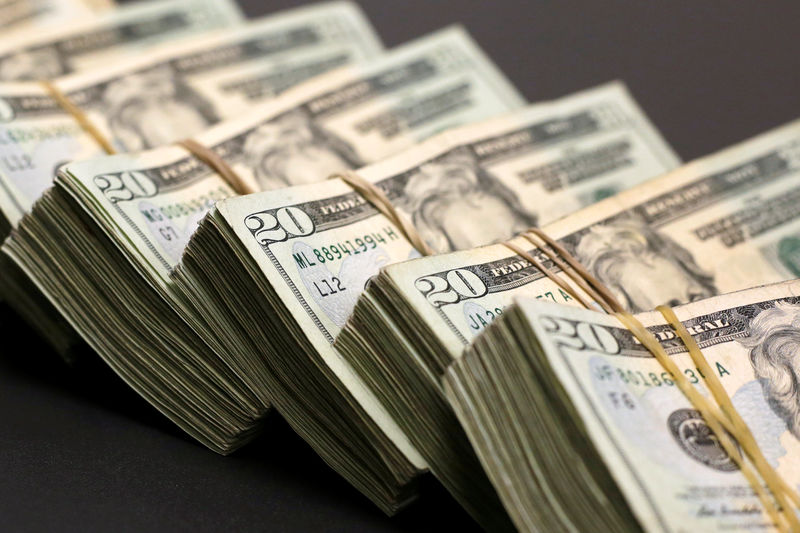* Dollar rally loses steam, but weekly gain best since '08
* Aussie, pound and won lift from milestone lows
* Signs of dollar shortage remain
* Graphic: World FX rates in 2020 https://tmsnrt.rs/2RBWI5E
By Tom Westbrook
SINGAPORE, March 20 (Reuters) - The dollar lost steam on
Friday after an ascent that left it set for its biggest weekly
gain since the 2008 global financial crisis, as the coronavirus
pandemic caused a stampede for cash that has trampled asset
markets.
The dollar is up about 3.5% on a basket of currencies =USD
through a week when investors have liquidated everything from
stocks to bonds, gold and commodities.
The Australian dollar AUD=D3 led Friday's partial recovery
among beaten-down majors with a 3% gain to $0.5897. Sterling
GBP=D3 rose 1.5% from a 35-year low to $1.1654.
The yen JPY= rose 0.7% to 109.97 per dollar. The South
Korean won KRW=KFTC rallied more than 3% from an 11-year low,
amid broader gains in regional stock markets. MKTS/GLOB
But with signs of stress in the financial system still
elevated - even as central banks across the globe pump cheap
dollars to banks - few expect a reversal of the dollar's rise.
"People are selling everything and the common thread is they
just want cash," said Stuart Oakley a Singapore-based executive
with Nomura, who runs the bank's trading with its clients.
"People just want cash because at the end of the day, people
don't know where their next revenue is coming from and they've
got payments to meet. I don't think that's going to change."
Virus news has also been grim. An Iranian official in Tehran
tweeted that the coronavirus was killing one person every 10
minutes. In Italy, soldiers were called in to shift the dead
from a cemetery overwhelmed by the numbers. California on Thursday issued a stay-at-home order for its
40 million residents, as cases in the United States surge past
13,000.
"The US dollar is doing what it should be doing in times
like these: appreciating," said Bank of America FX analyst Ben
Randol.
"We think that the US dollar will continue to appreciate in
unstable financial markets on most pairs potentially except yen
and Swiss franc," said Randol, excluding two currencies long
regarded as safe-havens.
KING DOLLAR
Already the dollar's gains over the past few weeks have been
staggering, and the surge is a nightmare for many countries and
companies that have borrowed heavily in greenbacks.
The Australian dollar AUD=D3 has lost 11% over two weeks,
its worst two-week drop since 2008. Norway's central bank is
considering FX intervention after a 20% fall in the
oil-sensitive krone NOK= over the same period.
The stress on economies has fuelled speculation in markets
that major nations could push for a new Plaza Accord, the 1985
agreement that led to major central banks intervention to weaken
a rampant dollar.
So far the U.S. Federal Reserve has extended a discount
dollar funding facility to nine more central banks, so that
dollars can wash across the globe.
Cross-currency basis swaps, which show the cost of borrowing
dollars abroad, show that has barely eased the strain in markets
so far.
The premium over interbank rates that investors were paying
to swap yen for one-year dollar funding JPYCBS1Y= was around
68 basis points, still close to the 2016 highs hit last week.
Euro cross-currency basis swap spreads also remain wide
EURCBS3M=ICAP and so is the FRA-OIS spread USDF-O0X1=R , a
barometer of risk in the interbank market.
"World markets are still very, very nervous," said Westpac
FX analyst Imre Speizer. "People are scrambling for (cash) any
way they can."
<^^^^^^^^^^^^^^^^^^^^^^^^^^^^^^^^^^^^^^^^^^^^^^^^^^^^^^^^^^^
U.S. Treasury daily FX interventions https://tmsnrt.rs/3b7gCin
^^^^^^^^^^^^^^^^^^^^^^^^^^^^^^^^^^^^^^^^^^^^^^^^^^^^^^^^^^^>
